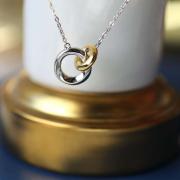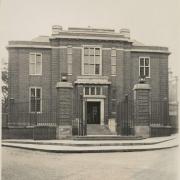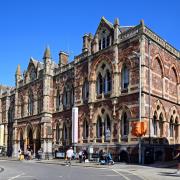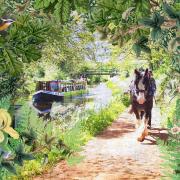In the bustling world of auction houses, textiles often emerge as fascinating remnants of history, each piece carrying a unique story. From vintage high fashion designer pieces to rare children's clothing from the Georgian period, the variety is endless. Every item tells a tale of fashion trends, social norms, and the painstaking labour of artisans.
One of the first memorable items I encountered was a Biba tiger pattern two-piece trouser suit, complete with 15-inch flare trousers. Immediately captivating, the suit encapsulated the vibrant history of the Swinging Sixties. Its iconic shape and cut remain as dazzling as ever.
Biba, a revolutionary fashion house which emerged in the 1960s, gained massive popularity, renowned for its bold prints and youthful style. Some of its outfits were in such high demand that when released they surpassed expectations and sold in their thousands – what we would consider as ‘going viral’ in today’s terms.

Sometimes, it is not the clothing itself but fragments that tell a story.
Brian Goodison-Blanks, head of our Collectors department says: ‘Past sales have showcased Woodbury Salterton lace, meticulously crafted in Devon by students at the Woodbury Lace School. This particular lace was used for Queen Alexandra’s wedding dress, accompanied by correspondence.
‘Many years ago, we handled garments from the Queen Mother’s dressmaker, including a letter from the Queen Mother herself, expressing concerns about the cost of clothes for a Commonwealth tour’.

More recently, we discovered a collection of exquisite Georgian textiles in a trunk at a South Devon property. The selection included beautifully embroidered silk tailcoats from the late 18th and early 19th centuries, which were remarkably well preserved with colours that retained much of their vibrancy.
Among the haul were examples of children's clothing from the period, such as babies’ bonnets, socks, and other pieces.
These plainer everyday items are often discarded in favour of more elaborate costumes, making their discovery a rarity. Although less vibrant, they offer a glimpse into everyday Georgian life, showcasing the contrast between the elaborate and the mundane.

More recently a late 18th century silk and floral embroidered open dress in the Marie Antoinette style was consigned for sale. This open dress design, known as the robe à la Française, revealed a contrasting or matching underskirt, and would have been worn over wide panniers (or side hoops) to exaggerate the hips and fitted boddice.
These architectural garments, designed to create the desired silhouette of the period, provide a stark contrast to the flowing 60s shapes and fabrics we are now accustomed to.

These dresses were often altered to keep up with changing fashions and handling them allows us to briefly bask in the opulence of the era.
The allure of these historical textiles is magnified by modern cultural phenomena like the TV series Bridgerton. This American historical romance, set in an alternative Regency-era London, has sparked a renewed interest in Regency fashion with its exquisite costumes.

One of our previous book auctions featured ‘Instructions for Needle Work and Knitting’, a volume from 1829 showcasing miniature examples of needlework by pupils of The Central School in London. A ‘penny club’, created by the ladies committee to provide work for the lower classes and education for the poor, allowed children to subscribe and acquire clothing for the cost of materials only, without any charge for the labour (because they made it themselves). This book, which included real samples of various knitting and needle-work projects, such as a baby's bonnet and a small sampler of an alphabet, sold for a hammer price of £5,500.

The textiles that come through our auction house doors are more than mere garments; they are historical artefacts that connect us to the past. They reveal the labour of artisans, the evolution of fashion, and the personal stories of their wearers. Each piece, whether a vibrant Biba suit or a delicate Georgian tailcoat, invites us to play dress-up with history, allowing us to explore our past.
bhandl.co.uk



























